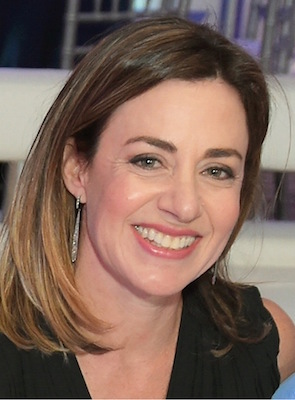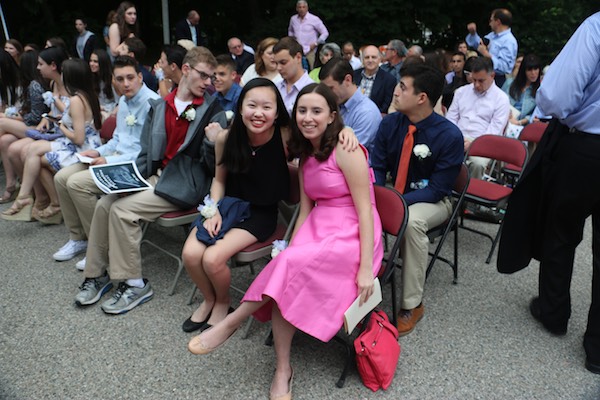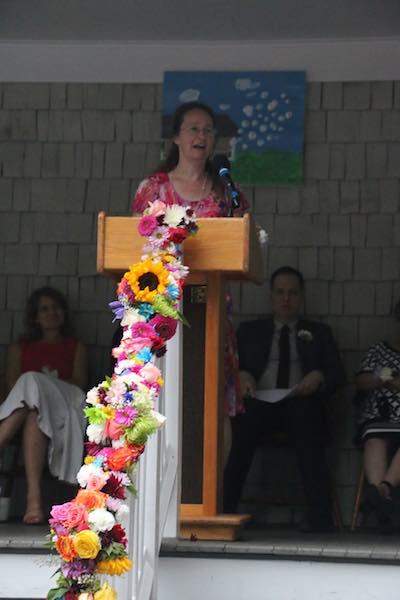Bunk Notes – Listening To Your Child When It Comes To Sleep-Away Camp
- Details
- Written by: Julie Stonberg
- Hits: 6834
 "Do you have anyone away?" "Are you looking for next summer?" "How is he/she doing at camp?" If you have elementary school-age children, chances are you've heard or participated in a conversation recently about sleep-away camp.
"Do you have anyone away?" "Are you looking for next summer?" "How is he/she doing at camp?" If you have elementary school-age children, chances are you've heard or participated in a conversation recently about sleep-away camp.
Overnight camping has been a uniquely American tradition since the 1880's, when many of the full-summer camps started as a way to get kids out of the city for the summer while parents worked. In Scarsdale and surrounding communities, sending a child off to camp for the summer can feel like a rite of passage -- especially for parents who have positive memories of their own camp days.
To be sure, there are wonderful aspects to sleep-away camp. Most have a "no-phone" policy, which gives kids a needed break from the social media world. Kids spend time outside, live with others, and have opportunities to learn new skills, make friends, and gain confidence and independence. Additionally, camp provides a temporary and sanctioned break from full-time parenting.
But sleep-away camp, especially the full seven-week program, is not for every child and every family, and certainly not for every child at the same age. There are many ways for kids to grow and learn during the summer. And pressuring or even forcing a child to attend sleep-away camp when they may not be ready or truly don't want to can do more harm than good.
Summer Options
Many of the traditional day camps change their programs as the kids get older to offer more independence and many even have short overnight trips. Some take their campers to actual sleep-away camps to provide a glimpse into what it feels like to attend. If your child is truly done with "day camp" but wants to stay close to home, there are specialized sports camps, arts camps, and other options, some for the full summer and some that run for a week or two. After "graduating" from day camp, my kids participated in sports camps at local colleges, a circus camp, and even a week of Italian cooking camp at Chef Central.
If a child is ready to go away but not for seven weeks, there are shorter options too. My daughter spent two summers late in elementary school at a wonderful arts-focused day camp, broken up by a week-long sleep-away gymnastics program. She experienced living in a dorm room with another child and making decisions on her own for a period of time that felt comfortable to her, and when she came back to school in the fall, she was able to join in any sleep-away camp conversations by talking about hers.
Don't Forget Grandma!
In many places, it's the norm to stick kids on a plane or a bus to go stay with Grandma or cousins for a period of time, whether they live in another state or another country. This is a wonderful option, as it allows your kids and your parents (or siblings) to form their own relationships (without you in the middle). You get the break, and your kids get to spend time away from home but still with family.
Normal Jitters
There are times when a child really does want to go away, but bursts into tears at the bus stop. The best way to handle this is to think back to how the decision was made. Was it truly your child leading the decision to go? Has he stuck with it leading up to the morning of departure? If that is the case it's probably a normal case of the jitters and you can explain that most kids feel the same way. Give him a big hug, (hide your own tears) and assume he will be fine once he settles in to the experience. (That goes for visiting day too. One of my sons began sobbing when there were still two hours left to spend with us, but when I asked him directly if he wanted to stay at camp, without hesitation he nodded through his tears.)
What if your child is truly miserable? More often than not, this happens in a situation where the child was hesitant to begin with, or even at times expressed that he or she didn't want to go, and was convinced to try it. While others may disagree, I would never force a truly unhappy child to stay at camp, even if it messes up your summer plans!! It's not worth it. Take him home. Your child needs you, and needs to know he (or she) is not a failure because he didn't stay at camp. It may have been a bad fit, he may not have been ready, he may just be homesick – who knows? The reasons will come out eventually, and in the process, you give your child the gift of unconditional support. Don't worry about your son or daughter being bored at home, or about "next year". You will figure it out together.
A Note About Homesickness
Homesickness is a physical feeling, and it is totally normal. Kids can feel homesick even if they truly love camp and want to be there. And often (lucky for you) when they go to write you a letter, they think about home, which then brings on a huge wave of homesickness...and guess what they write about?? If you feel like your child really is happy at camp but you get a bad letter, don't panic.
Speak to the camp directors to check in. More often than not, they will set your mind at ease. It helps also to talk about homesickness with your child before they go. Together, you can write down some suggestions for when the feeling strikes – for example: get involved in another activity, go to sleep, talk to a counselor – and they can pull out the list when they need it.
Explain that most kids feel homesick at camp at some point, and that it really just means that they have wonderful loving relationships at home – a positive thing!
Let Your Child Lead
In the end, the most important thing is to take cues from your child. You may have always pictured your daughter in your camp colors leading her color war team in the next generation, and that's a hard image to let go.
But the beauty of summer is that nothing is mandatory. Think of it as a time for kids to explore different parts of themselves, and train yourself to really listen with your head and your heart to what they are saying and feeling.
Your daughter (or son) may ultimately wind up at your "alma mater," or she many not, but the fact that you gave her the space to decide on her own will go much further in the long run for her confidence and your relationship.
Author Julie Stonberg is a clinical social worker with a private practice in Hartsdale. Her three children did eventually enjoy full summer camping experiences, but it was a unique journey for each.
A School Graduation Proceeds Rain and Shine
- Details
- Written by: Louisa Blatt
- Hits: 6810
 The rain couldn't put a damper on anyone's mood at the Scarsdale Alternative School's senior graduation. Due to SAS's small size and personal nature, its graduating ceremony was touching and personalized. Each of the A School teachers presented on a handful of advisees, telling wonderful stories about each student until all 28 have been uniquely celebrated. Well, in this case, 29. Director of the A School and A School teacher, Howard Rodstein, graduated with the class of 2017 onto retirement. It was a very emotional occasion, filled with tears and hugs. Underclassmen also contributed by presenting gifts to the seniors and organizing the event. Though the ceremony had to be moved inside in the middle, it continued to be lovely. Senior Aaron Hirsch closed the ceremony with an address to his classmates, explaining as best as he could what the A School truly means.
The rain couldn't put a damper on anyone's mood at the Scarsdale Alternative School's senior graduation. Due to SAS's small size and personal nature, its graduating ceremony was touching and personalized. Each of the A School teachers presented on a handful of advisees, telling wonderful stories about each student until all 28 have been uniquely celebrated. Well, in this case, 29. Director of the A School and A School teacher, Howard Rodstein, graduated with the class of 2017 onto retirement. It was a very emotional occasion, filled with tears and hugs. Underclassmen also contributed by presenting gifts to the seniors and organizing the event. Though the ceremony had to be moved inside in the middle, it continued to be lovely. Senior Aaron Hirsch closed the ceremony with an address to his classmates, explaining as best as he could what the A School truly means.
Same-Sex Parenting in Westchester
- Details
- Written by: Stacie M. Waldman
- Hits: 11901
 When I set out to write an article on same-sex parenting in Scarsdale, I did not expect to come back completely empty-handed. I received referrals for same-sex couples living in other nearby towns and I had people write to me saying they didn't know of any personally in Scarsdale but they'd be welcome and accepted with open arms. When I finally found a dad who was raising kids with his husband in Scarsdale and was willing to chat with me he ilet me know that there are actually four other gay couples raising children together within his area of Scarsdale. Is there anything that Scarsdale, as a village, can do to encourage more same-sex parents, parents-to-be and couples to move here? Is Scarsdale a "gay friendly" place to raise a family?
When I set out to write an article on same-sex parenting in Scarsdale, I did not expect to come back completely empty-handed. I received referrals for same-sex couples living in other nearby towns and I had people write to me saying they didn't know of any personally in Scarsdale but they'd be welcome and accepted with open arms. When I finally found a dad who was raising kids with his husband in Scarsdale and was willing to chat with me he ilet me know that there are actually four other gay couples raising children together within his area of Scarsdale. Is there anything that Scarsdale, as a village, can do to encourage more same-sex parents, parents-to-be and couples to move here? Is Scarsdale a "gay friendly" place to raise a family?
I had the opportunity to speak with him as well as two lesbian couples who are raising their kids in Edgemont and Mt. Vernon. Their names have been changed for privacy. Here is what they shared:
Lilly and her wife and moved to Edgemont in 2000; shortly thereafter their first child was born. "We moved from the city with the intent of having kids. We considered going to towns that had more diversity and other families with same-sex parents," she said. "We considered the river towns in Westchester as well as Montclair, New Jersey. We ultimately settled on Edgemont because we thought that even though we'd likely be the only same-sex couple here, we knew the schools were top notch and felt that although not diverse, people would be accepting of our less traditional family," she added. This actually turned out to be true on all fronts; Lilly and her wife have found Edgemont as a whole to be entirely accepting of their family and for the first 15 years here did not meet another gay couple in Edgemont.
Phoebe has been surprised at the number of gay couples she has met here in Westchester. She and her wife moved from Brooklyn after their first baby was born; like most, they needed to get out of the city and into the suburbs. "We picked lower Westchester for the commute and because it's a larger, educated population so we thought we'd probably feel less discrimination towards and more acceptance of our family," she said. They scouted the area, picked a home in Mt. Vernon and soon after had their second child. Their kids are now three and one and they are thinking of moving before the kids start elementary school to be in a better school system within Westchester.
I asked both women and the Scarsdale man how it has been so far raising kids in lower Westchester. "Starting in Kindergarten, we made it clear to the teachers that our child has two mothers," said Lilly. "From there it just became known and there was never a need to proactively announce it. No one ever flinched at all." Lilly and her wife were particularly impressed with Edgemont schools when it came time to make cards for mom/dad holidays. "They'd suggest that our kids make something for a grandfather or uncle for Father's Day and for Mother's Day they would come home with two cards, one for each of us." As far as other kids in Edgemont, "...we found that kids' values often reflect parents' values," Lilly responded. They did have fears that their kids would be bullied or singled out for having two moms but this never happened. "There have been some uncomfortable situations, like kids asking how it's even possible to have two moms," she added. She thinks Westchester County in general is accepting of LGBT families but that homophobia does still exist.
Phoebe and her wife have been pleasantly surprised with their reception in Westchester. "We've met quite a few gay couples and met two PTA heads at private religious schools that are both same-sex parents. I run the LGBT Tri-State Facebook group which has put us in touch with similar families all over Westchester. We've met LGBT people who live with their families in Yonkers, Dobbs Ferry, Eastchester, Tuckahoe, White Plains...they're everywhere." She added, "I don't think we are facing anything different here than we'd be facing anywhere else." Phoebe did once recall going to a fundraiser where a guy who had too much to drink cornered them and asked when he could meet the father. "I think he meant it as a joke," Phoebe said, "but it definitely set us back a bit." Although Phoebe didn't think it's specific to Westchester, she said that one of the hardest things for gay couples with kids is if your child doesn't biologically resemble you. This is likely an issue for parents of adopted children who are a different race or ethnicity. "People often feel like they have a right to ask uncomfortable questions."
The Scarsdale man thinks that Scarsdale is a fabulous place to raise kids as a same-sex couple. He has absolutely no complaints and believes the situation couldn't be more ideal. As a member of the community, he thinks it's a total non-issue being gay in the community. It has been remarkably inclusive. At school he has noticed that mother's day is referred to as parents' day and various inclusive book suggestions have come home that they appreciated.
Are there other towns in Westchester that seem to have more gay couples? Lilly responded, "We have friends in New Rochelle who are gay and they're definitely not the only ones in that town like we are in our town. The river towns have more diversity and more same-sex couples. That being said, I was recently out walking our dog and I bumped into a couple of guys who are a gay couple in Edgemont. They don't have kids and as far as I know they are the only other same-sex couple in-town." Phoebe lives in Mt. Vernon but sends her daughter to preschool in Bronxville. "Bronxville has never really felt comfortable for us," she said. "It has always seemed kind of stuffy. Everyone seems to love Pelham!" The Scarsdale man said that Montclair, NJ is becoming a hub for same-sex couples raising kids.
Noel D'Allacco sits on Rob Astorino's LGBT Advisory Board for Westchester County. Although not gay herself, she has been on the board for 3-4 years and advises the County Executive in cases of possible discrimination. There have been almost no issues during her tenure on the board. However during this year's gay pride parade in White Plains, cars were vandalized with hateful messages against gay people. "The biggest issues in Westchester County surrounding gay people are really with the youth counseling services and supportive things like that," Noel voiced. She encouraged anyone seeking support and a community to check out the Loft in White Plains.
So, it seems that Scarsdale remains a progressive community that has been inclusive and accepting of families with same-sex parents and would be welcome more same-sex couples/LGBT families. The Scarsdale man said that it would help for straight couples to proactively discuss the possibility of kids having two moms or two dads with school-age children. He isn't sure what the community could do to invite more same-sex couples to consider Scarsdale as a place to live and raise a family but he thought this article could help position Scarsdale as an inclusive and comfortable place to be gay and raise a family. Mostly, he wanted to say a big thank you to Scarsdale for doing exactly that.
Scarsdale Forum's Education Committee Solicits Residents' Views
- Details
- Written by: Mayra Rodriguez Valladares
- Hits: 4431
 The Education Committee of the Scarsdale Forum has created a survey to solicit Scarsdale residents' views about school topics that they want the Education Committee to research and report upon. The results of the survey and any reports that the committee writes will be available to the public after their completion on the Forum website. According to Education Committee Co-Chair Mayra Kirkendall-Rodríguez, 'the Education Committee wants to write reports that are relevant and useful to the Scarsdale school administration, the Board of Education, and all Scarsdale residents. The survey can be accessed here.
The Education Committee of the Scarsdale Forum has created a survey to solicit Scarsdale residents' views about school topics that they want the Education Committee to research and report upon. The results of the survey and any reports that the committee writes will be available to the public after their completion on the Forum website. According to Education Committee Co-Chair Mayra Kirkendall-Rodríguez, 'the Education Committee wants to write reports that are relevant and useful to the Scarsdale school administration, the Board of Education, and all Scarsdale residents. The survey can be accessed here.
At its Board of Directors meeting on June 8, 2017, incoming Forum President ML Perlman nominated Fox Meadow resident Mayra Kirkendall-Rodríguez and Greenacres resident Carlos Ramírez as co-chairs of the Forum's Education Committee; the Forum's Board of Directors approved their nomination. This will be Kirkendall-Rodríguez' second year as co-chair of the Education Committee. Ramírez is a member of several committees in the Forum including the Education Committee.
Kirkendall-Rodríguez holds an AB in Russian and Soviets Studies from Harvard and Radcliffe Colleges, an MBA in Finance and Emerging Markets from The Wharton School, and an MA in Russian and Eurasian Studies from the Lauder Institute of the University of Pennsylvania. She is a Raoul Wallenberg Fellow from Hebrew University. During her undergraduate and graduate studies, she studied in Germany, Israel, and Russia. She is fluent in English, Spanish, and Russian and has conversational Hebrew, German, and Italian. She runs her own firm, MRV Associates, where she consults and trains on bank regulations, risk models, and capital markets globally. She has published over 150 articles on financial, energy, and education topics. At Fox Meadow Elementary, she has been one of the co-chairs for the Multicultural Fair for two years; she is secretary of the Old Scarsdale Neighborhood Association. She volunteers interviewing prospective students to Harvard College.
Carlos Ramírez earned his Master of Science in Educational Leadership from the College of Saint Rose. He holds a Master of Science in Internet Business Systems and a Bachelor of Science in General Accounting, with a specialization in Computers and Information Systems from Mercy College. Presently, he is working on his Master in Educational Leadership and Administration at Pace University, and is pursuing a PhD degree in Educational Leadership and Administration at Concordia University. He is also an accountant. Earlier this year, the New York State Association of School Business Officials named him Advocate of the Year for his work with public schools. He is fluent in English and Spanish and has conversational Portuguese. Ramírez is Interim Director of Technology and CIO of the Greenburgh Central School District. Under general supervision of the Assistant Superintendent for Curriculum and Instruction he administers, plans and coordinates the daily technological functions of the school district. Previously, Ramírez served as Coordinator of Technology Policy for the New York State Education Department in Albany. Ramírez is an active member of the Greenacres Neighborhood Association.
Kirkendall-Rodríguez and Ramírez thank Forum President Perlman and the Board of Directors for their appointment. They look forward to serving the Scarsdale community. They encourage residents to complete the school topics survey and to join the Education Committee. The Education Committee co-chairs may be reached at [email protected].
Residents React to School Facilities Survey
- Details
- Hits: 8436
 A survey about school facilities that was sent to district residents following a presentation by the new district architects has some recipients frustrated and perplexed. At the Board of Education meeting on May 22 school architects BBS proposed to build two large additions to Greenacres School, extending the school to Putnam Road and Huntington Avenue. No measurements and few details were provided, and it was not clear what would be done to the remaining portions of the building. The architects did project that the work would take two and a half years and said that the children would remain in the school during the renovation.
A survey about school facilities that was sent to district residents following a presentation by the new district architects has some recipients frustrated and perplexed. At the Board of Education meeting on May 22 school architects BBS proposed to build two large additions to Greenacres School, extending the school to Putnam Road and Huntington Avenue. No measurements and few details were provided, and it was not clear what would be done to the remaining portions of the building. The architects did project that the work would take two and a half years and said that the children would remain in the school during the renovation.
At the meeting, many community members and several members of the Board of Education asked why the possibility of a new school had been taken off the table
The survey confused many who were expecting to answer questions about the future of Greenacres School – but found that the survey did not single Greenacres out or offer a new school as a response to any of the questions. The survey questions treated all elementary schools as equals and failed to note that extensive work has already been done to upgrade and expand the other schools while leaving Greenacres for this next bond offering.
Instead of addressing the issues at Greenacres, it posed general questions about enhanced music spaces, cafeterias/learning spaces and security vestibules, features that were not previously on any list of district priorities as defined by past building committees. It also included a question about building a large cafeteria at the middle school but did not mention that the individual dining rooms in each of the four houses of the middle school would be closed.
Questions were asked about enhancing the Learning Resource Center at the high school and installing district-wide air conditioning. Again, these two items seemed to be ideas generated by the administration without consultation with the community.
At the May 8 meeting of the Board, Dr. Hagerman said that he had hired a "PR firm" to send out surveys to the community following each presentation from the architects. This might be key to why the surveys did not ask the questions people wanted to which residents wanted to provide feedback. Normally a research firm, not a public relations firm would be retained to assess public opinion. In this case, the survey might be more of a tool to sway public opinion then to discern the will of the community.
A new group called the Greenacres Elementary Task Force has produced a video about the proposed renovation that has already received 1,700 views. You can see it by clicking here. They are advocating for the district "to innovate not renovate" and have drafted a petition asking the administration to provide a cost analysis of a new school vs. a renovation including the cost to relocate the students off-site.
It appears that many younger parents who were sitting on the sidelines and waiting for the school board and the administration to propose a solution for the aging school have now become alarmed because the proposed renovation will leave their children in the school during the 2.5-year construction project.
The school board meets next on the night of June 12 and many are expected to comment.

























